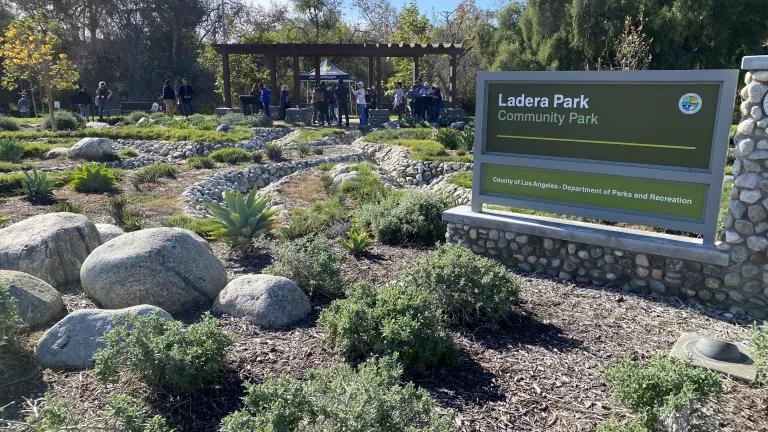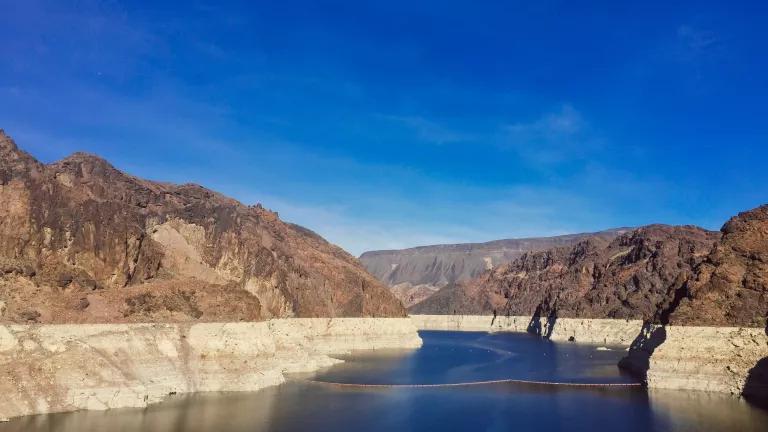
Shockingly, California does not have a plan for drought, even though droughts are a fact of life here and scientists have been warning for years that climate change will make them worse. Instead of planning for these predictable and predicted events, California’s “plan” is to declare an “emergency” and revert to the destructive approach of violating water quality standards and praying for rain, rather than curtailing unsustainable water diversions that are diverting millions of acre feet of water, devastating native fish and wildlife — and the thousands of jobs that depend on their health. Instead of learning from the drought of just a few years ago, we’re on track to repeat the mistakes from 2014-2015.
That, sadly, was the gist of my testimony to the State Assembly’s Water, Parks and Wildlife Committee in its May 5th oversight hearing on drought (you can watch a video of the hearing here: my testimony begins around the 2 hour and 16 minute mark). The failure to be prepared for dry conditions this year – only 7 years after the disaster that was 2014, and the promises that we’d do better this time – is a fundamental failure of State leadership.
Droughts are a normal fact of life in California, but climate change is increasing the severity and frequency of droughts. For our native fish and wildlife, droughts are compounded by unsustainable water diversions; flows in our rivers would already be low due to drought, but dams and diversions mean that dramatically less water flows through our rivers. For instance, during the last drought, nearly 80% of the water that would have flowed through the Tuolumne River was diverted by irrigation districts and the City of San Francisco in 2015, leaving barely a trickle for fish and wildlife (even less of the water flowed downstream during the critical winter and spring months).
More than two months ago, our coalition of conservation groups, Delta advocates, fishing organizations, and the Winnemem Wintu Tribe petitioned the State Water Resources Control Board to take immediate action to prevent a repeat of the disastrous response to drought in 2014-2015. During the last drought, the State Water Board waived water quality standards in the Delta, worsening salinity and water quality for farms, cities, and fish and wildlife in the estuary. The Board claimed that doing so would conserve upstream storage to protect salmon, but the Bureau of Reclamation lost temperature control below Shasta Dam and killed the vast majority of salmon that spawned in the Sacramento River. We wrote this letter in March because we were very concerned that we would see a repeat of that disaster.
Two months later, the State Water Board still has not responded to our petition, while the things we were most concerned about – waiving Delta water quality standards and draining upstream reservoirs so low that they lose temperature control and wipe out salmon – are unfolding in slow motion, just as we feared:
- The Bureau of Reclamation and DWR dramatically increased reservoir releases starting in April, in order to allocate more than 4.5 million acre feet of water this year, primarily to large agricultural water districts – even though these operations are projected to kill the vast majority of salmon that spawn below Shasta Dam this year.
- On May 10, Governor Newsom issued an executive order authorizing the State Water Board to waive Delta water quality standards (just like in 2014-2015) and install a salinity barrier in the Delta because the projects will violate Delta water quality standards (just like in 2014-2015), with the state claiming that this would help conserve upstream storage (just like in 2014-2015), and without further reducing the millions of acre feet of water being allocated to large agricultural water districts like the Sacramento River Settlement Contractors or reducing the State Water Project allocation to zero.
This year’s drought conditions are not unprecedented, but really are a failure to plan. In light of the State’s failure to meet water quality standards in the Delta and water temperature standards below Shasta Dam in 2014 and 2015, several years ago NRDC asked DWR to demonstrate how the State Water Project and federal Central Valley Project would maintain water quality standards and prevent massive fish kills in a future drought, since the modeling indicated they would not do so. A plan to meet water quality standards would likely require reductions in water deliveries to ensure those standards would be met, or DWR could have admitted that they plan to violate standards in future droughts. But DWR refused to do so, claiming that it was “speculative” to evaluate how the State Water Project would be operated in future droughts.
The State’s failure to plan for meeting standards during droughts isn't just our view, it also was echoed in the April 30th letter sent by the State Water Resources Control Board to the Department of Water Resources and U.S. Bureau of Reclamation regarding the repeated violations of water quality standards in the Delta that protect farms, cities, and fish and wildlife in the month of April, where the Board wrote:
Although the current violations are exacerbated by the extreme dry conditions, they are in part the result of the overallocation of Project water during dry conditions. Additionally, risk management and operational decisions by the Projects were made that appear to have discounted the need to maintain regulatory compliance.
Indeed, this will be the 3rd time in the last 7 years that the State has waived or violated Delta water quality standards during dry conditions. What’s more, the existing water quality standards are too weak to protect fish and wildlife, particularly in dry years. Weakening those standards, whether it’s salinity standards in the Delta or water temperature standards that protect salmon upstream, are certainly bad for fish and wildlife, and bad for communities too.
The LA Times Editorial Board was spot on in explaining that this is simply the new normal, and in their recommendations for how the State should respond:
More 20th century infrastructure, lawmaking and emergency declarations won’t get us through this drought — because this is no drought… there is no “temporary” situation, and one-time money should not be spent to keep operations at unsustainable former levels. Money spent on programs or infrastructure that does not reflect new climate patterns or help water users adapt to them is money wasted.
More agricultural acreage should be fallowed, and less water diverted from dried-out rivers and streams for unsustainable vineyards and orchards. Floodplains should be restored, so that in wet winters the excess water that once might have been frozen on mountainsides but now rushes downhill as flash floods can gather, settle and seep into the ground over the dry springs, summers and falls, and in the meantime sustain birds and spawning fish whose ancient marshes and wetlands we have drained. Urban areas, once they use their water, must purify it and use it again, because imports from distant places will be less certain, and it is foolish to keep flushing all that useful water away.
The state Senate’s drought package makes important investments to ensure safe drinking water now and for a more sustainable future, and NRDC supports this package. Improved water use efficiency and diversified water supply sources, including water recycling and stormwater capture, are a big reason why Southern California is better prepared for drought (As MWD of Orange County recently noted, thanks to reduced demand, even after withdrawing approximately 500,000 acre feet of water from storage Metropolitan is expected to end the year with the fourth highest levels of water storage in its history).
But without action by the State Water Board to significantly curtail water diversions and ensure that standards are met, we’re going to watch our native fish and wildlife and Delta water quality continue to be sacrificed in favor of the agricultural industry’s profits.



